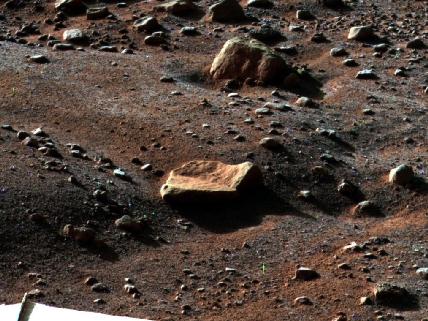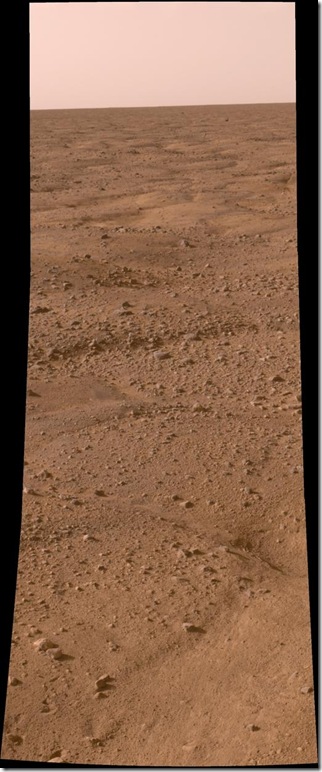NASA Picture of the Day
"A thin layer of water frost is visible on the ground around NASA's Phoenix Mars Lander in this image taken by the Surface Stereo Imager at 6 a.m. on Sol 79 (August 14, 2008), the 79th Martian day after landing. The frost began to disappear shortly after 6 a.m. as the sun rose on the Phoenix landing site.
The sun was about 22 degrees above the horizon when the image was taken, enhancing the detail of the polygons, troughs and rocks around the landing site.
This view looks east-southeast with the lander's eastern solar panel visible in the bottom left-hand corner of the image.
This false color image has been enhanced to show color variations."
Image Credit: NASA/JPL-Caltech/University of Arizona/Texas A&M University



